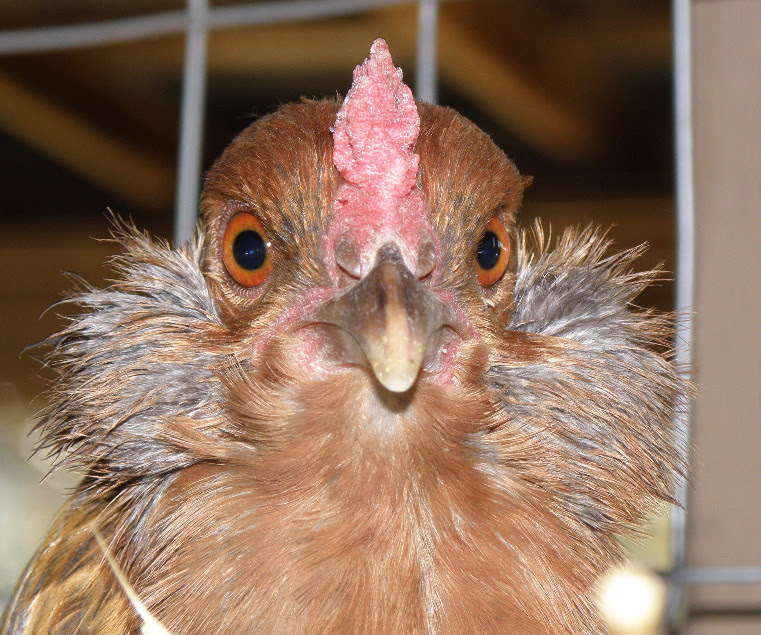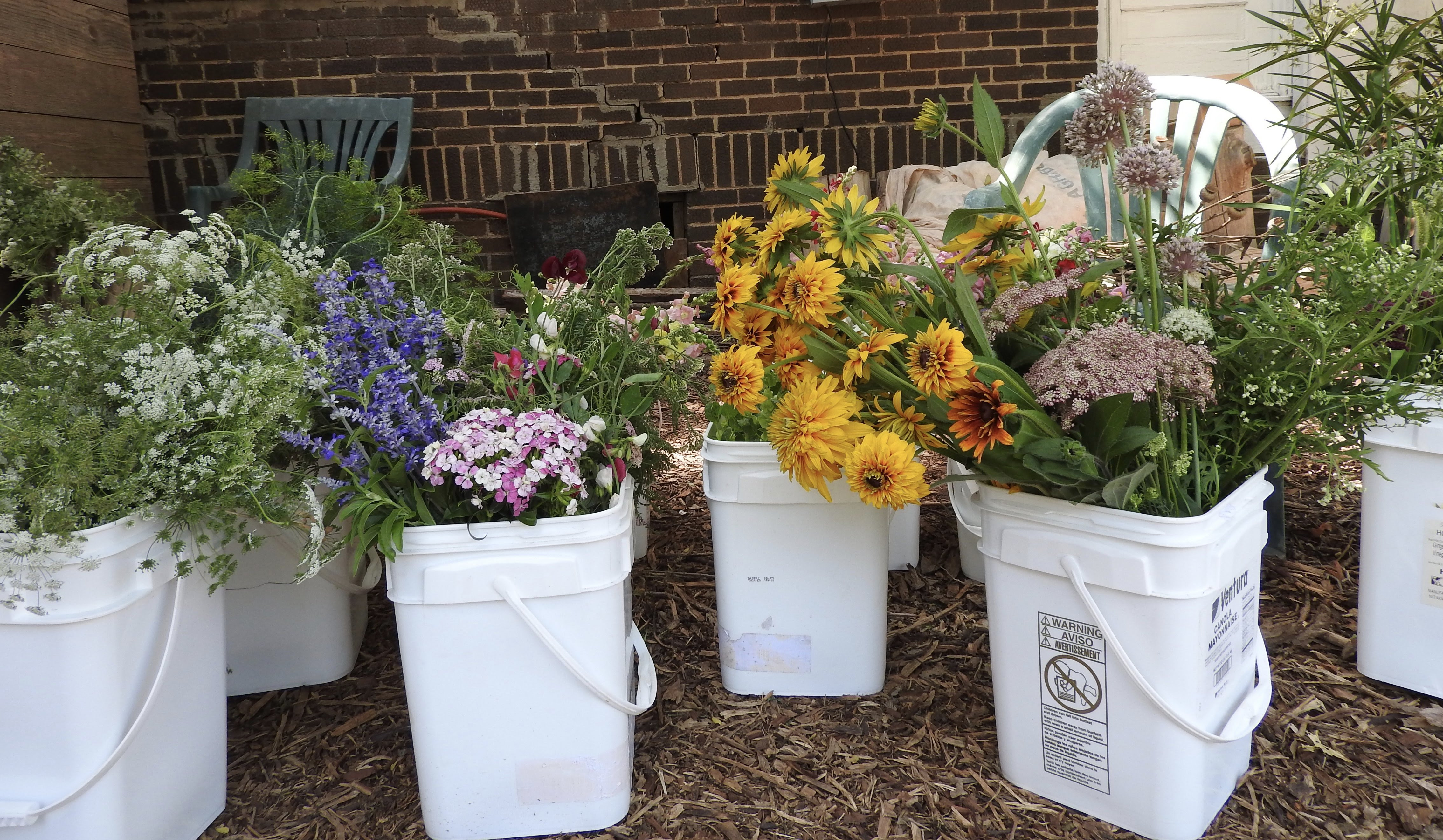Garden School: Backyard Hens
Saturday, Sept. 9
11 am to noon
3310 N. Olie
Come meet some local hens and learn the basics about these fun and rewarding pets. We will discuss how to buy chickens and how to care for them properly, including food, housing, and protection from predators.
Instructor: Sara Braden & several visiting hens. Sara is co-founder and assistant farm manager of CommonWealth Urban Farms.
ALSO IN SEPTEMBER:
The New Victory Gardens Tour
 Sept. 23
Sept. 23
10 am to 1 pm
Locations:
CommonWealth Urban Farms
3310 N. Olie
And SixTwelve, 612 NW 29th, OKC
During WWII, more than 12 million Victory Gardens were planted in cities across the country, and home gardeners produced a third of all vegetables consumed in the U.S. Today, urban farms, community gardens, and front yard and backyard gardens are all part of a fast-growing revival in growing food in cities across the country.
Drop in anytime between 10 am and 1 pm for tours at both sites, located just 7 blocks apart. CommonWealth Urban Farms include vegetable gardens, cut flower garden, compost operation, hoop house, rainwater collection system, fledgling food forest, and neighbors’ front yard gardens. Tours of SixTwelve include the vegetable garden, rain garden, hoop house, mini orchard and community center.
Check out other upcoming Garden Schools on our website.
Plant Your Fall Garden Now!
Fall is the easiest and most pleasurable time to garden in Oklahoma. With the heat of summer behind us (hopefully), the season is wide open for planting.

(Many eager gardeners attended August’s Garden School on planning the fall garden. Pictured at right.)
Greens and root crops rule the fall garden. You can broadcast seed for lettuce, arugula, kale, mustards and collards, plus beets, carrots, radishes and turnips now. (Think you don’t like turnips? Try Hakurei baby turnips from Johnnys Seeds – delicious!)
If you’ve had trouble growing carrots successfully, here are my two tricks. Carrot seed is super picky about drying out, and it takes up to 2 weeks to germinate. That means watering those seeds EVERY day after you plant them—until you see the tiny green sprouts emerging from the soil. Also, carrots need a loose soil for their long roots to grow unimpeded; slide a garden fork into the soil every 10-12”, rocking it back and forth, to aerate and prepare the soil before seeding.
Tip for planting spinach in early fall: Unlike most seeds, spinach will only germinate when the soil is cool. Soak spinach seeds overnight in a jar with a lid, then pour off the water and put them in the frig for a week. They’ll actually germinate in that chilly environment; you’ll see the tiny white tip of the root start to break through the seed coat. Plant immediately, before the root gets long and can easily break off. The seed will happily grow in warm soil if pre-germinated in this manner.—Lia
You should see the new flower garden!
 There is nothing like a sea of flowers to make my heart leap. I can harvest flowers all morning, then come back 3 days laterand the garden is full of blooms all over again. And it’s not just us humans who are enjoying them! Bees and monarchs and all manner of tiny flying friends make the flower garden a lively place indeed.
There is nothing like a sea of flowers to make my heart leap. I can harvest flowers all morning, then come back 3 days laterand the garden is full of blooms all over again. And it’s not just us humans who are enjoying them! Bees and monarchs and all manner of tiny flying friends make the flower garden a lively place indeed.
This is our first year to grow cut flowers at our location. One by one, we’ve dug 30 new rows, and planted zinnias, marigolds, sunflowers, snapdragons, gladiolus, ornamental basils and millets, gomphrena, and more!—Lia
 Slow Flowers
Slow Flowers
Do you need a gift for an upcoming birthday, anniversary or host gift? Why not put your gift-dollars to work doing good in your community? Commonwealth Urban Farms Slow Flowers bouquets are locally and sustainably grown. They provide abundant food and shelter for area pollinators, as well as food for the soul of the neighborhood.
Take a moment to imagine the story of a store-bought bouquet. Eighty percent of industrially-raised flowers are grown in another country, where the average flower farmer wage is $6 a day. They are often grown using chemicals that are illegal in this country (some of which is still present on the flowers when you buy them) that are toxic to the wildlife and the workers and in ways that degrade the land. Our growing practices build the soil up, support the wildlife and the people who work with us.—Stephanie
Click here to order your Slow Flowers!
Meet our Team: Sara Braden
 “Elia rode her bike past our house often and saw the front yard garden and wanted to be friends with the people who lived there. She talked to David about the idea of an urban farm production garden. I had known Elia as a fiber arts person. I’m not sure how I got sucked in to the garden. I just started doing things without being sure where it was going.”
“Elia rode her bike past our house often and saw the front yard garden and wanted to be friends with the people who lived there. She talked to David about the idea of an urban farm production garden. I had known Elia as a fiber arts person. I’m not sure how I got sucked in to the garden. I just started doing things without being sure where it was going.”
On Wednesdays, which is a harvest day, she often spends hours at the three sinks in the lean-to, washing and spinning the greens that are sold to restaurants and CSA members. On Saturdays, as manager of the CSA, she divides up the CSA portions for members, sets them out, greets and assists members as they pick up their orders. Her other days on the farm include pulling weeds, prepping beds, setting tomato cages and any number of tasks.
Sara began her work alongside husband David in the composting operation and isn’t sure how she moved into the vegetable part of the farm.
“I’m not a gardener,” she often reminds people. But she has a history of gardening—starting in Italy!
She was there to study violin-making. While she did that, she lived in a house that had been damaged by earthquakes, working on the house, cooking for the owner and tending the garden. At the end of two years, she’d made a guitar rather than a violin.
She and David moved to Oklahoma in 1998. David gardens at their home and Sara raises chickens.
At CommonWealth, in addition to everything else, she has unofficially become responsible for keeping things light when the work tends toward intensity, and collects good jokes to share. Steadfastly claiming she isn’t a gardener, she continues to be CSA manager and a stellar veteran gardener, but has given up her staff position.
“I like the volunteer aspect and I plan to continue as a volunteer.”
When asked what it is about CommonWealth Urban Farms that sustains her continued dedication to its work, she says: “I like seeing the light bulb go on for people. One time I was giving a tour of the garden, and a woman pointed to a yard-long bean that was covered in ants. She said, ‘What do you do about this problem?’ I said something like, ‘I don’t actually see that as a problem, so I just ignore it.’ She looked surprised. I think she thought I would have some clever, non-poisonous way to handle what a factory farm would see as a problem; instead I just didn’t see it as a problem. Problem solved.”—Pat
Bug Spotlight: Spider Wasp
 Spider Wasps. Yeah. I said it. Spider Wasps. Take a moment to cringe and then read on. Spider wasps belong to the family Pompilidae in the Order Hymenoptera. Okay, so these guys are no joke. As you can see from the picture, they often take on prey just as large, if not larger than themselves. They do not kill their prey. Instead, the sting that they inflict paralyzes the spider and the wasp then transports it back to a nest. They usually have to drag the spider home, as often the spider is too big to carry in flight.
Spider Wasps. Yeah. I said it. Spider Wasps. Take a moment to cringe and then read on. Spider wasps belong to the family Pompilidae in the Order Hymenoptera. Okay, so these guys are no joke. As you can see from the picture, they often take on prey just as large, if not larger than themselves. They do not kill their prey. Instead, the sting that they inflict paralyzes the spider and the wasp then transports it back to a nest. They usually have to drag the spider home, as often the spider is too big to carry in flight.
 I watched as this particular wasp dragged its spider the entire length of the 30-foot east-west wall of the Hoop House. Apparently some species of spider wasps actually bite off the legs of the spider, making it easier to transport, and then subsequently proceed to drink the blood that leaks from the wounds. Wow. That’s gnarly. The female wasp then lays a single egg on the alive-but-paralyzed spider and well, the rest is history.
I watched as this particular wasp dragged its spider the entire length of the 30-foot east-west wall of the Hoop House. Apparently some species of spider wasps actually bite off the legs of the spider, making it easier to transport, and then subsequently proceed to drink the blood that leaks from the wounds. Wow. That’s gnarly. The female wasp then lays a single egg on the alive-but-paralyzed spider and well, the rest is history.
Most spider wasps are about ½-to-1 inch long, but some (like the well-known, and beautifully-colored, tarantula hawk) are larger than 2 inches in length. They generally have dark or black bodies and yellowish- or orange-colored wings. Most often they are found amidst the flowers…for a couple of hours…on a beautiful day… Or they are found running along or hovering above the ground in search of prey. Also, I imagine the following is probably a mute point but you should avoid directly disturbing spider wasps, as their stings are said to be exceptionally and excruciatingly painful.
Spiders are generally considered beneficial in the garden, and so unless you have a desire to curb the spider population in your insectal community, spider wasps receive the baddie stamp of disapproval. Sorry guys.—Christopher
Farm Tours
Do you know people you want to know about CommonWealth Urban Farms? We give regular free tours at 9 a.m. the first Saturday of the month. Or, be in touch with us to schedule a tour another day. Group tours are $5 per person, with a minimum of $50. Contact us: Info@commonwealthurbanfarms.
